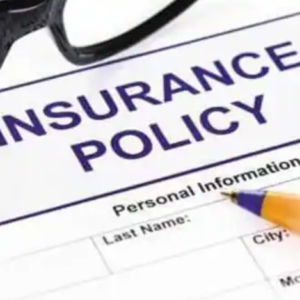Ever felt a knot of worry tighten in your stomach as you merge onto a busy highway? Sharing the road comes with inherent risks, and even the most cautious driver can find themselves in an accident. Auto insurance isn’t just about following the law (though in most places it is!), it’s about empowering you to navigate the road with peace of mind.
This guide will unveil the inner workings of auto insurance, explaining how it protects you financially, the different coverage options available, and the factors that influence the cost. So, buckle up and get ready to learn how auto insurance can become your copilot on the journey towards secure and confident driving.
Auto Insurance: Your Financial Shield on the Road
Imagine cruising down the highway, enjoying the scenery. Suddenly, an unexpected turn of events leads to an accident. Whether it’s your fault or not, the potential for financial ruin looms large. Auto insurance steps in as your knight in shining armor, offering a financial safety net in such situations.
Understanding the Basics
Auto insurance is a contract between you and an insurance company. You agree to pay a regular premium, and in return, the company agrees to cover your losses up to specified limits in case of accidents, theft, or other covered perils. It’s a financial risk-sharing mechanism that protects you from significant out-of-pocket expenses.
How It Works
Imagine you’re cruising down a scenic coastal road, windows down, hair blowing in the breeze. Suddenly, a car pulls out from a side street, and… crunch. Thankfully, everyone is okay, but both vehicles are damaged. This is where auto insurance steps in, transforming a potentially disastrous situation into a manageable inconvenience.
Here’s a breakdown of how auto insurance works to shield you from financial blows:
- The Contract: You enter into an agreement with an insurance company. You agree to pay a premium, which is essentially a set amount of money, typically on a monthly or semi-annual basis. In return, the insurance company promises to cover your financial losses up to specified limits in the event of a covered incident.
- The Claim Scenario: Let’s revisit our coastal crash. After the accident, you contact your insurance company and file a claim. An adjuster will be assigned to assess the situation. They’ll gather information about the accident, including the police report (if applicable), and inspect the damage to your vehicle.
- Deductible: This is your out-of-pocket expense before the insurance company kicks in. It acts as a kind of “co-pay” for car insurance. Think of it as your contribution to the repair or replacement cost. The higher your deductible, the lower your premium will be, and vice versa.
- Coverage Limits: Your policy outlines specific coverage limits, which are the maximum amounts the insurance company will pay for different types of losses. There are separate limits for various coverages, such as property damage or bodily injury. For instance, your liability coverage might have a limit of $50,000 for bodily injury per person and $100,000 per accident. This means the insurance company will cover up to those amounts for injuries sustained by others in an accident you cause.
- Payout: Once the adjuster determines the extent of the damage and subtracts your deductible, the insurance company will issue a payment to cover the remaining repair costs (up to your coverage limit) or the cash value of your car if it’s totaled. They may also work directly with a repair shop to streamline the process.
It’s important to note: This is a simplified overview. The claims process can vary depending on the specific circumstances of your accident and the insurance company’s procedures. Always refer to your policy details for a comprehensive understanding of coverage and the claims process.
Types of Coverage
Auto insurance offers a diverse menu of coverage options, each catering to specific scenarios. Let’s delve deeper into the most common types of coverage to equip you for making informed choices:
1. Liability Coverage (Required in Most States):
This acts as the foundation of your auto insurance. It protects you from financial ruin if you cause an accident and injure someone else (bodily injury liability) or damage their property (property damage liability). Imagine you rear-end the car in front of you at a red light, damaging their bumper. Liability coverage would kick in to pay for repairs to the other car, preventing you from having to shell out thousands of dollars from your own pocket.
2. Collision Coverage (Optional, But Often Recommended):
This coverage comes to your rescue when your car is damaged in a collision with another vehicle or object. So, if you accidentally sideswipe a parked car or hit a rogue shopping cart in a parking lot, collision coverage would take care of the repair bills for your own vehicle.
3. Comprehensive Coverage (Optional, But Often Recommended):
While collision coverage deals with bumps and scrapes, comprehensive coverage guards your car against a wider range of perils. This includes events like theft, fire, vandalism, hail, or even damage caused by animals. Think of it as an insurance shield against unforeseen circumstances beyond your control. For instance, if a mischievous raccoon decides to take up residence under your hood and chews through some wires, comprehensive coverage would cover the repairs.
4. Medical Payments Coverage (MedPay) (Optional):
This coverage prioritizes your well-being, regardless of who’s at fault in an accident. It pays for medical bills for you and your passengers, including ambulance services and emergency room visits. MedPay can be a lifesaver, especially if you don’t have health insurance or your health insurance has limited coverage for auto accidents.
5. Uninsured/Underinsured Motorist Coverage (UM/UIM) (Optional, But Can Be Essential):
Imagine a scenario where you’re hit by a driver with no insurance, or worse, not enough insurance to cover your damages. This is where UM/UIM coverage steps in. It protects you financially if you’re involved in an accident with a driver who lacks adequate insurance or is completely uninsured. UM/UIM coverage can also come into play if you’re struck by a hit-and-run driver.
Choosing the Right Coverage
The optimal coverage combination depends on your individual needs and circumstances. Consider factors like the value of your car, your risk tolerance, and your driving habits. For a valuable car, collision and comprehensive coverage are wise investments. If you live in an area with high crime rates, comprehensive coverage becomes even more important.
Consult with your insurance agent to discuss your options and create a personalized coverage plan that provides peace of mind without breaking the bank. Remember, a few dollars saved on your premium today could translate into significant financial protection tomorrow.
Factors Affecting Auto Insurance Costs
So, you’ve grasped the importance of auto insurance and explored the various coverage options. Now comes the question: how much will it cost? Unfortunately, there’s no one-size-fits-all answer. Several factors come into play when insurance companies calculate your premium, essentially determining the price at the pump for your insurance policy. Here’s a breakdown of the key influences:
1. Your Driving Record:
This is a major determinant. A clean record with no accidents or tickets translates to lower premiums, as you’re statistically considered a less risky driver. Conversely, a history of accidents, moving violations, or DUIs will significantly increase your premium. Insurance companies view you as a higher risk, and they’ll charge you accordingly.
2. Your Age:
Young drivers (typically under 25) and senior drivers (over 65) tend to pay more due to higher accident risks associated with these age groups. Teenagers are statistically less experienced drivers, and seniors may have slower reflexes or limited vision.
3. Your Location:
Where you live significantly impacts your premium. Densely populated urban areas with higher accident rates and theft risks will see higher premiums compared to rural areas. Additionally, states with stricter traffic laws or higher minimum liability requirements may translate to costlier insurance.
4. Your Vehicle:
The make, model, and value of your car influence the premium calculation. Generally, high-performance cars, sports cars, and luxury vehicles come with higher premiums due to their repair costs and potential for theft. Safety features can play a role too, with cars equipped with airbags, anti-theft systems, and other safety technology potentially qualifying for discounts.
5. Your Coverage Selection:
The types of coverage you choose and the limits you select will directly impact the overall premium amount. Opting for comprehensive and collision coverage alongside high coverage limits will naturally cost more than just basic liability coverage with lower limits.
6. Your Credit History (Not in all States):
In some states, your credit history can be a factor. Studies suggest a correlation between poor credit history and a higher likelihood of filing claims. Drivers with good credit scores may be eligible for discounts.
7. Your Driving Habits:
Some insurance companies offer usage-based insurance programs that track your mileage or driving behavior through telematics devices. Safer drivers who log fewer miles may qualify for lower premiums.
Keeping Your Costs in Check:
By understanding these factors, you can make informed decisions to manage your auto insurance costs. Here are some tips:
- Maintain a clean driving record.
- Consider taking a defensive driving course, which may qualify you for discounts.
- Shop around and compare quotes from multiple insurance companies.
- Ask about available discounts, such as good student discounts, multi-policy discounts, or bundling your car insurance with your homeowner’s insurance.
- Increase your deductible if you’re comfortable assuming a higher out-of-pocket expense in case of a claim.
Remember, auto insurance is an investment in your financial security. By being a responsible driver and making smart choices, you can navigate the road with confidence, knowing you have the right insurance coverage to protect yourself from unforeseen events.
Finding the Right Coverage
Auto insurance isn’t a one-size-fits-all solution. With a variety of coverage options available, navigating the process can feel overwhelming. But fear not! This guide will equip you with the knowledge to find the perfect coverage combination that safeguards you on the road without exceeding your budget.
1. Assess Your Needs:
The first step is to conduct a self-assessment. Consider your driving habits, the value of your car, and your risk tolerance. Here are some questions to ponder:
- How often do you drive? Do you commute long distances or primarily use your car for errands?
- Where do you park your car regularly? Is it in a safe garage or on a busy street?
- What type of car do you own? Is it a brand new luxury car or a reliable older vehicle?
- Are you comfortable taking on a higher deductible to save on your premium?
2. Explore Your Options:
Once you have a clearer understanding of your needs, delve into the different coverage options. Here’s a quick refresher on the most common ones:
- Liability Coverage (Required in Most States): This is the foundation, protecting you from financial ruin if you cause an accident and injure someone else (bodily injury liability) or damage their property (property damage liability).
- Collision Coverage (Optional, But Often Recommended): This shields you if your car gets damaged in a collision with another vehicle or object.
- Comprehensive Coverage (Optional, But Often Recommended): This guards your car against a wider range of perils like theft, fire, vandalism, or animal damage.
- Medical Payments Coverage (MedPay) (Optional): This prioritizes your medical bills, regardless of fault, after an accident.
- Uninsured/Underinsured Motorist Coverage (UM/UIM) (Optional, But Can Be Essential): This protects you financially if you’re involved in an accident with a driver who lacks adequate or no insurance.
3. Strike a Balance:
The ideal coverage combination lies in striking a balance between protecting yourself financially and keeping your premium manageable. Here are some pointers:
- For Valuable Cars: Consider both collision and comprehensive coverage for optimal protection.
- For Older Cars: You might opt for liability coverage only, especially if the car’s value is lower than the cost of comprehensive and collision coverage.
- For High-Risk Areas: Comprehensive coverage becomes more important if you live in an area with high crime rates.
- For Young Drivers: Adding your teen driver to your policy can be expensive. Explore usage-based insurance options that track their driving habits and potentially offer discounts for safe driving.
4. Consult an Insurance Agent:
Don’t hesitate to seek guidance from a qualified insurance agent. They can explain the intricacies of different coverages, assess your specific situation, and recommend a personalized plan that fits your budget and risk profile.
5. Regularly Review Your Coverage:
Your needs and circumstances may change over time. It’s wise to periodically review your auto insurance coverage, especially after major life events like buying a new car, moving to a different location, or having children who start driving.
Finding the right auto insurance is about achieving peace of mind. By understanding your needs, exploring your options, and making informed choices, you can ensure you have the necessary coverage to navigate the road with confidence, knowing you’re protected in case of the unexpected.
Conclusion
Auto insurance is an investment in your financial security. By understanding how it works, the different coverage types, and the factors affecting costs, you can make informed decisions to choose the right insurance plan that protects you on the road. Remember, a few dollars saved on your premium today could translate into significant financial hardship tomorrow in case of an unforeseen event. Drive safely and be prepared for the unexpected with the right auto insurance coverage.





